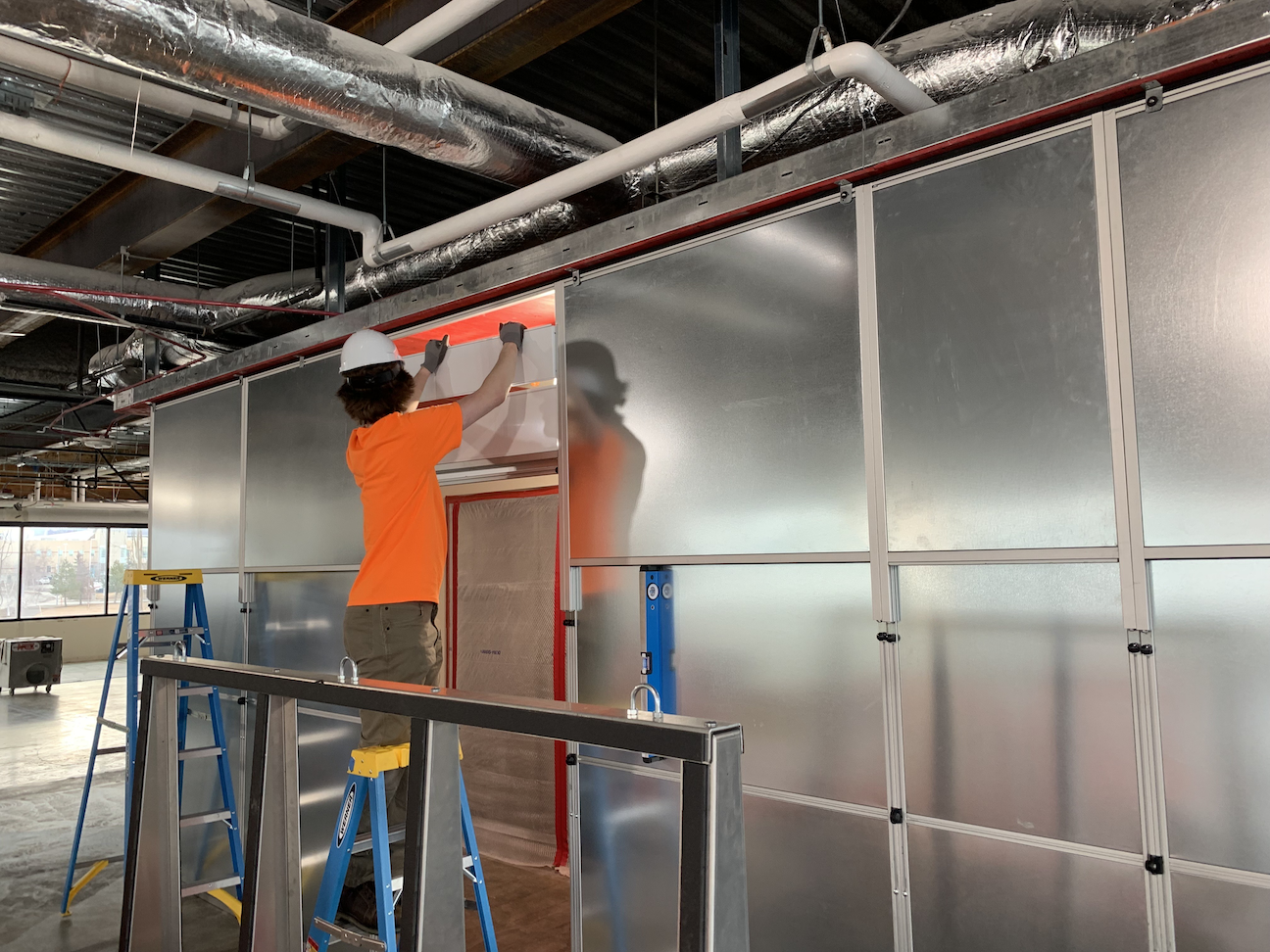In today’s industrial and construction environments, ensuring workplace safety isn’t just a moral imperative; it’s a legal obligation. The Occupational Safety and Health Administration (OSHA) sets stringent standards to safeguard workers from potential hazards, particularly concerning dust control.
In this blog article, we’ll delve into the critical role of using temporary walls to adhere to OSHA dust control standards. We will also explore regulations, safety measures, the scope of application, crystalline silica dangers, and how temporary walls effectively control dust.
Using Temporary Walls to adhere to OSHA dust control standards
Temporary Wall Systems are a practical solution for dust control. Their rapid installation and ease of removal without construction waste make them a viable option for controlling construction dust. Temporary walls can also be equipped with supplementary features such as High-Efficiency Particulate Air (HEPA) filtration systems to enhance dust control efficacy.
Temporary Wall Systems can also be fitted as ICRA-graded containment systems in hospitals or healthcare centers. Constructing ICRA barriers helps to control dust in a healthcare environment, which helps with infection control and overall safety. By erecting a modular barrier between construction or renovation zones and occupied spaces, these walls impede the spread of dust and mitigate the risk of exposure.
Understanding OSHA Dust Control Standard
OSHA Dust Control Standards are set in place to give workers and occupants a safer place to work. OSHA standards are applicable across various workplaces, encompassing construction sites, factories, manufacturing plants, and beyond. Wherever potential exposure to hazardous dust exists, these regulations are paramount.
OSHA Dust Control Regulations
OSHA’s dust control standards include specific requirements tailored to different industries and workplace environments. These specific requirements serve as crucial guidelines for employers to develop comprehensive dust control programs that prioritize worker safety and health.
Here are some examples of OSHA standards when it comes to dust:
- OSHA’s standard 1910.22 mandates employers to maintain workspaces free from accumulations of combustible dust to prevent fire hazards.
- OSHA standard 1926.1153 focuses on controlling silica dust generated during construction activities like cutting, drilling, and grinding.
- OSHA’s Hazard Communication Standard (1910.1200) necessitates employers to inform workers about the hazards of exposure to various types of dust, ensuring they are aware of the risks and trained on proper handling and protective measures.
What is Crystalline Silica?
Crystalline silica, a prevalent mineral found in numerous construction materials like sand, concrete, and stone, poses a substantial risk to worker health. Cutting, drilling, or crushing these materials releases fine silica dust particles into the air, potentially leading to severe health complications.
The Hazards of Crystalline Silica Exposure
Exposure to crystalline silica dust can lead to several health issues, including lung cancer, silicosis, and various respiratory ailments. Even fleeting exposure to elevated concentrations of silica dust can pose significant health risks, underscoring the imperative nature of effective dust control measures.
Creating Safe Work Environments
At the core of OSHA’s standards lies an unwavering commitment to worker safety. Dust control measures extend beyond mere cleanliness; they are pivotal in preventing severe health complications from prolonged exposure to harmful particles. No matter the location, dust needs to be controlled for both workers and potential occupants. Read more about how TWS helps prevent dust in different environments.
Conclusion: Prioritizing Safety Through Proactive Measures
Temporary Wall Systems play a pivotal role in OSHA adherence and safety by easily controlling dust and minimizing the risk of exposure to hazardous substances like crystalline silica. By investing in robust dust control measures, employers demonstrate a steadfast commitment to safeguarding the well-being of their workforce and ensuring compliance with regulatory mandates.



